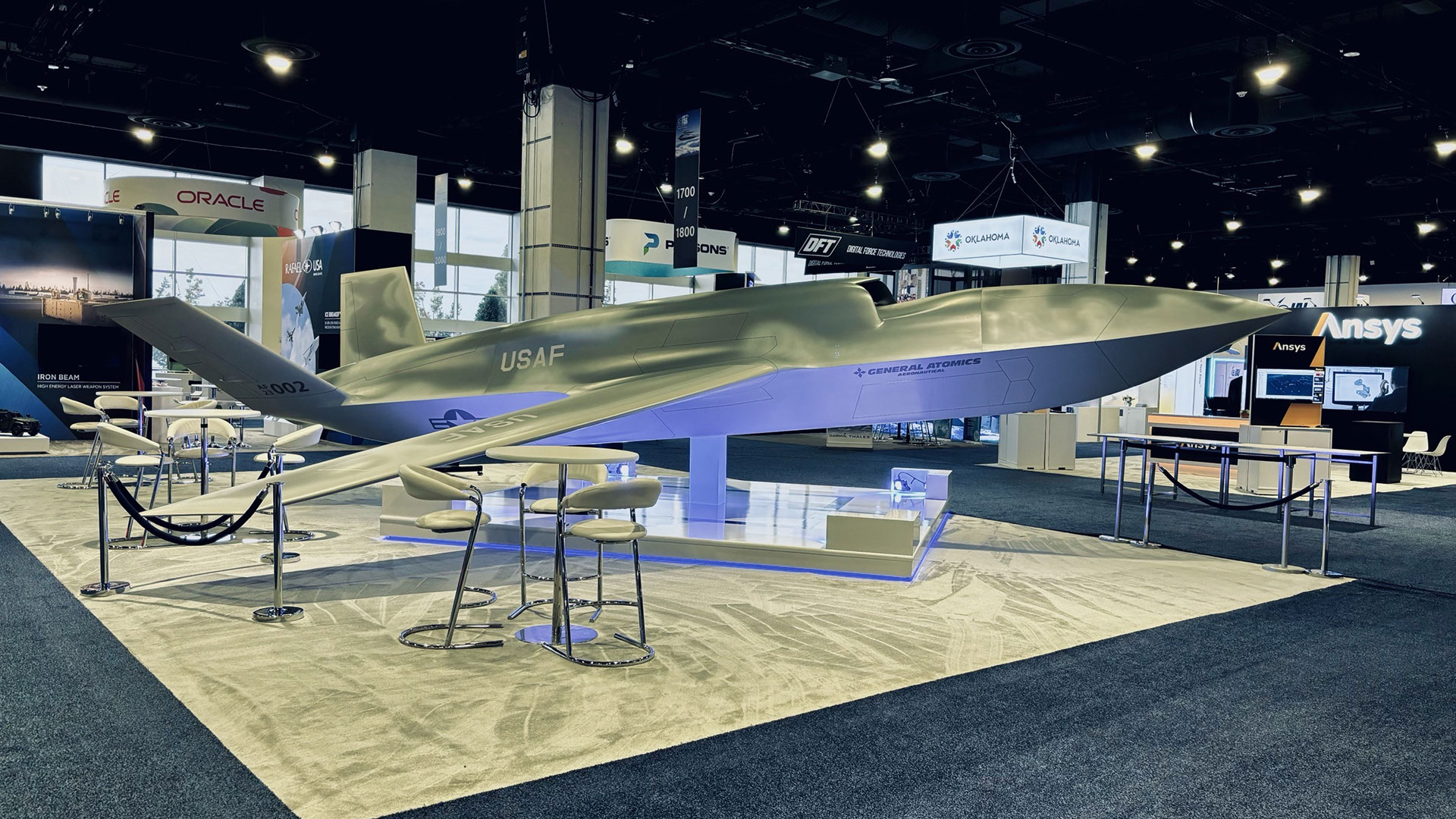UAV.com Staff Report
Washington D.C. leaders are getting closer than ever to the future of airpower at a major exhibition underway just outside the nation's capital.
Congressional, military and other influential attendees are taking their first look at two revolutionary aircraft types on display at the Air Force Association's annual conference.
Unmanned systems pioneer General Atomics Aeronautical Systems, Inc., has displayed two historic articles at the conference: one is the Air Force Research Lab's XQ-67A Off-Board Sensing Station, a flying, operational uncrewed combat air vehicle taking a break from its test program for the event.
The second is a 1:1 model of GA-ASI's in-development Collaborative Combat Aircraft, placed on display following authorization from the Air Force.
"We're telling a simple story here, but a powerful one: we're building the future of air dominance," said David Alexander, president of GA-ASI. "XQ-67A is a game-changer. It validates AFRL's concepts for these aircraft and shows we can go out and put those new concepts into action -- fast. Our CCA model shows that we can go from a novel design to a production aircraft, fast – and soon, we'll be able to turn those out at scale."
Collaborative combat aircraft are autonomous, highly capable jets that extend and augment the capabilities of traditional combat aircraft formations. Several CCAs fly alongside or ahead of a human-piloted fighter and serve as its remote eyes; augment its communications; and preserve what military officers call "decision advantage" for the U.S. and its allies.
In other words, CCA sees an adversary first and lets American or allied crews decide first what to do. In a notional future crisis or conflict, that might include a human pilot authorizing a CCA to use force against the enemy.
Family, genus, species
Part of the advantage of a CCA is that it has no personnel management pipeline for human pilots, meaning that there is no notional limiting number of human crew members for a future fleet. The Air Force can buy many of them in large numbers and field greater "mass," as tacticians call it, against an adversary that may have as many or more traditional aircraft.
To do this, the Air Force Research Lab wanted an aircraft with a common core, one that could receive different bodies, wings or other features.
First, this enables the aircraft to be highly producible – the way an automaker might set up an assembly line for a common frame and chassis which it can decide to turn into a family car or a luxury sedan. Second, it means that even as the Air Force is buying larger numbers of this system, they're also cheaper than a traditional fighter and comparatively easy to modify or upgrade.
The XQ-67A is that aircraft. It has a common core and went from the drawing board to the runway in less than two years. The unarmed aircraft has made a number of flights in its development program since first taking to the sky in February of 2024.
GA-ASI engineers disassembled the XQ-67A at its flight test facility in California and shipped it in crates to the AFA convention hall outside Washington D.C. Then they reassembled it for static display in the days before the show opened.
This year, as AFRL was establishing that the concepts associated with this new generation of air superiority were feasible – now proven – the Air Force also was selecting contractors to design and build production-representative aircraft that could serve as operational CCAs.
GA-ASI was one of those winners and it has been at work since receiving that contract award in the spring of 2024. The company's actual aircraft has not been seen publicly but it unveiled the full-size model for the first time at the AFA conference.
Specifics about these aircraft, including their speed, altitude, performance envelope and payloads, are closely held for security reasons. Alexander responded to questions from UAV.com by laughing and holding up both hands.
"Can't tell you," Alexander said. "All I can say is that these are highly, highly relevant platforms in the context of air dominance."
